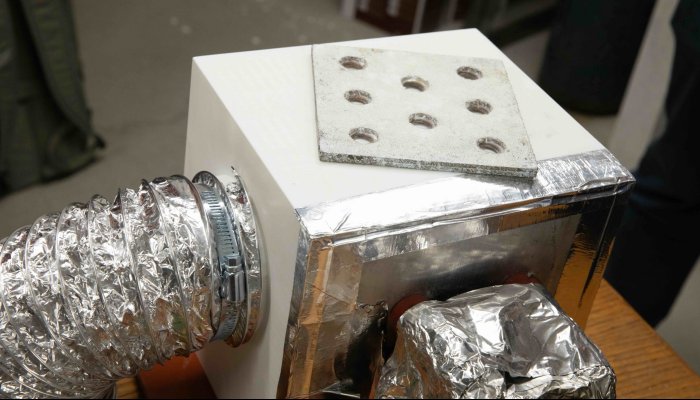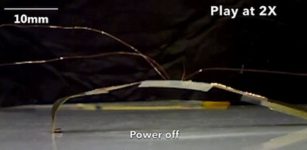Producing Water Out Of Thin Air – Even In Arid Places
Eddie Gonzales Jr. – MessageToEagle.com – Earth’s atmosphere contains enough water to fill the Great Salt Lake 800 times. Extracting moisture from the air could provide clean drinking water to billions facing chronic shortages globally.
Graphical abstract. Credit: Cell Reports Physical Science (2024). DOI: 10.1016/j.xcrp.2024.102115
Current atmospheric water harvesting (AWH) technologies face challenges in size, cost, and efficiency.
University of Utah engineers have made discoveries that could enhance efficiency in extracting drinking water from the air, potentially benefiting arid regions. The study introduces a novel compact fuel-fired AWH (atmospheric water harvesting) device. This prototype uses adsorbent materials to extract water molecules from dry air, then applies heat to convert them into liquid form.
“Hygroscopic materials intrinsically have affinity to water. They soak up water wherever you go. One of the best examples is the stuff inside diapers,” Sameer Rao, senior author and assistant professor of mechanical engineering, said in a press release. He compared metal-organic frameworks to Lego blocks, rearrangeable to form various structures, creating molecules ideal for gas separation.
This prototype developed with graduate student Nathan Ortiz, the study’s lead author, uses aluminum fumarate that was fashioned into panels that collect the water as air is drawn through.
According to Rao, a gram of this material has a surface area equivalent to two football fields, allowing it to capture significant amounts of water. Its molecular-scale surface area within the pores is ideal for trapping water vapor.
Support for the research came from the DEVCOM Soldier Center, a program run by the Department of Defense to facilitate technology transfer that supports Army modernization. The Army’s interest in the project stems from the need to keep soldiers hydrated while operating in remote areas with few water sources.
“We designed this for defense use, allowing soldiers to carry a compact water generator instead of heavy canteens,” Rao said. “It produces water on demand.”
The device uses panels of adsorbent material made from aluminum fumarate to snag water molecules. Credit: Dan Hixson.
Rao and Ortiz have filed for a preliminary patent based on the technology, which addresses non-military needs as well.
“While designing the system, we considered the broader water problem, including civilian needs,” according to Rao. “We focused on household drinking water consumption, which is about 15 to 20 liters per day.”
Ortiz’s device can be practically used in arid environments. It’s potentially groundbreaking due to its use of energy-dense fuel, similar to camping stove gasoline, rather than photovoltaics.
“Solar panels limit operation to daytime or require heavy batteries,” Ortiz said.
“This technology excels in arid conditions, while refrigeration is better in high humidity.”
Written by Eddie Gonzales Jr. – MessageToEagle.com Staff Writer












